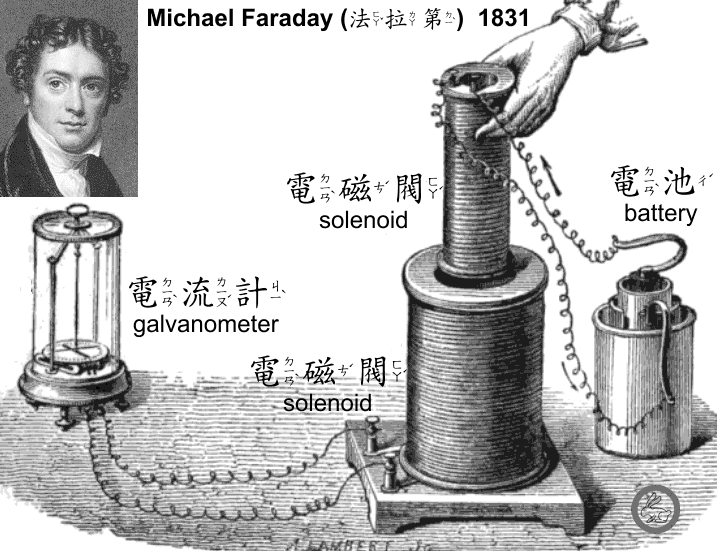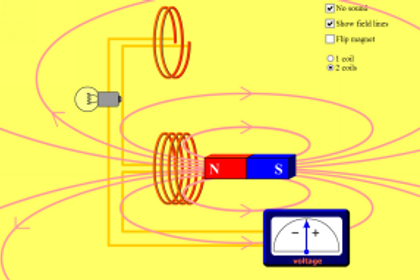| Electric Fields | Magnetic Fields
|
|---|
| Φ (Flux)
| $$ \Phi_E = \iint \mathbf {\vec E} \, \cdot d \mathbf {\vec A} $$
| $$ \Phi_M = \iint \mathbf {\vec B} \, \cdot d \mathbf {\vec A} $$
|
|---|
| $$ \mathscr E \,\,\, (emf) = {W \over {q}} = $$
| $$ {W_{chem} \over q} (電池) \, ; \, \oint {\mathbf {\vec E}}(s,t) \, \cdot \, d \, \mathbf {\vec s} $$
| $$ \color{fuchsia} - { {d \Phi_m} \over {dt}} $$
|
|---|

Faraday 法拉第 |
$$ \oint {\mathbf {\vec E}}(s,t) \, \cdot \, d \, \mathbf {\vec s} = - {d \over dt} \iint { \mathbf {\vec B}}(s,t) \, \cdot d \mathbf {\vec A}(t)$$
|
|---|
目前電場
和磁場是一个方便的数学方法,
现在是物理學
Up to this point, fields have been useful mathematical tools to help us do calculations,
Faraday discovered that these fields really do physically exist. (This idea was rejected by his fellow scientists. Faraday did not live to see the eventual acceptance of this idea by the scientific community.)
|
29.60 An electron in a cathode-ray tube is accelerated through ΔV=10 kV. It then passes through a d=2.0-cm wide region of uniform B-field. What B-field strength will deflect the electron by θ=10.0 degrees?
29.30 Build a cyclotron that will accelerate protons to 10% of the speed of light (c). The largest vacuum chamber you can find is 44 cm in diameter. What B-field strength do you need?

